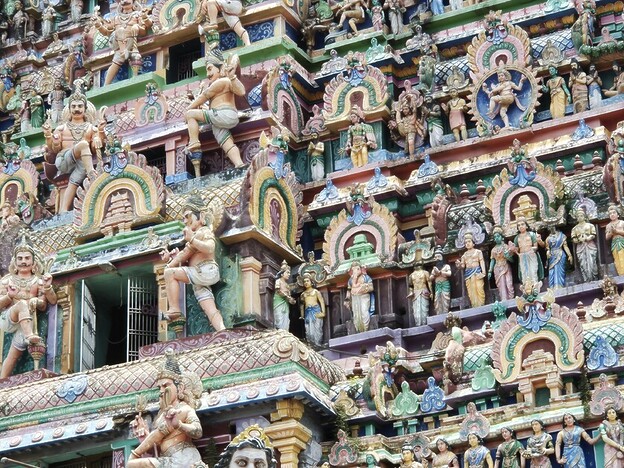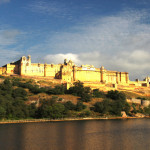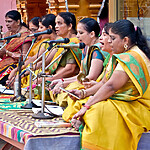Mark Nicholls visits the Temple Towns of Tamil Nadu and discovers awe-inspiring examples of Hindu religious architecture
Tamil Nadu is famous for its temples.
Dotted across this southern India state, soaring gopurams pierce the skyline with ornately carved towers that date back centuries signifying the importance of Hinduism in this part of the world.
Many of the granite-built temples continue to serve communities as daily places of worship while others are historic monuments and, in some cases, UNESCO World Heritage sites.
Shore temples
A journey through the temple towns of Tamil Nadu highlights the development of this incredible form of religious architecture, with no better place to start than the Shore Temples at Mamallapuram one hour south of the state capital Chennai.
Dating from the 7th century, these structures have defied time and the sea, rarely more than when the 2004 Boxing Day tsunami struck this part of the Indian coastline with devastating consequences.
Many homes and lives were lost, but the temples stood firm and remain today as they have for the past 1300 years.
While small in terms of the major religious complexes, it is possible that the Hindu temples of Trichy (Tiruchirappalli), Madurai, Chidambaram or Tanjore may not have existed if not for the blueprint of Mamallapuram.
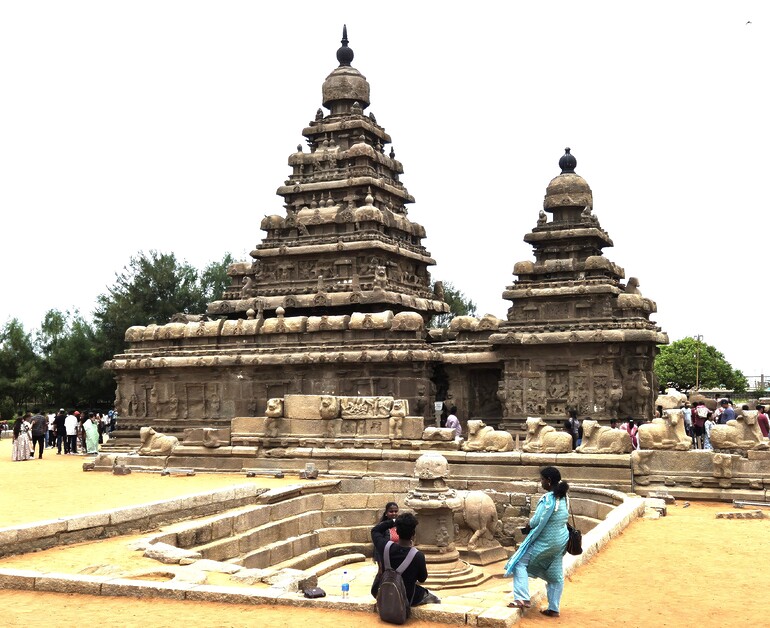
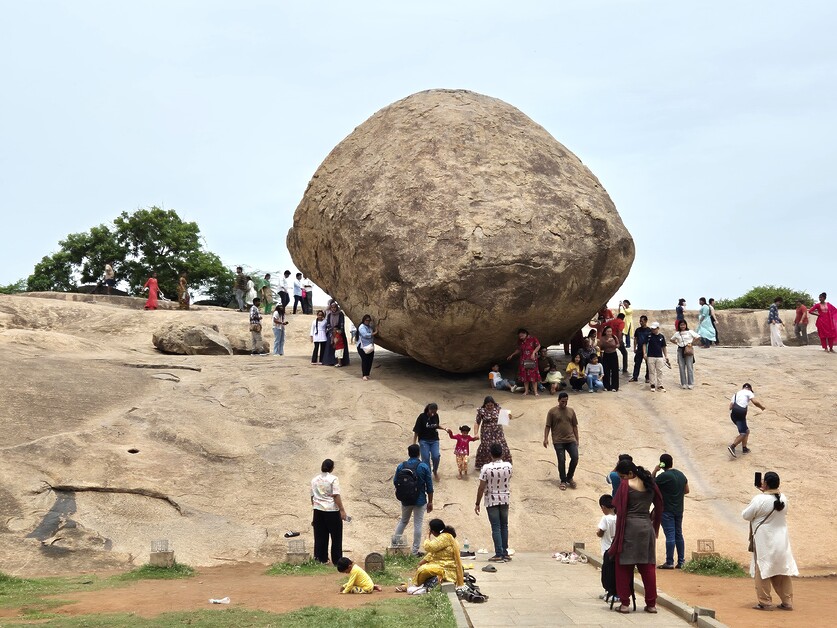
Indeed, as my guide, P.S. Mahesh, states: “This was the ‘R&D’ site for temple architecture; prototypes for temples in Trichy, Madurai and beyond.”
The evolution of temple construction can be seen within this village with examples of monolithic temples carved from single rocks or blocks, known as the Five Rathas, to the Shore Temples which remain “one of the most photographed temples in the world.”
Nearby is Arjuna’s Penance, depicting a scene from the Mahabharata and a carved masterpiece of bas-relief, while Krishna’s Butterball – a huge rock balanced precariously on the ledge of an escarpment – continues to amaze visitors.
Dancing Shiva
To reach the Natarajar Shiva temple in Chidambaram, you head south through the rice bowl of Tamil Nadu.
Built by the Cholas, the temple style is fully developed in terms of architecture and art, featuring four high gopurams (entry gates) adorned with colourfully painted carvings and paths leading to the inner sanctum and the deity of a Dancing Shiva.
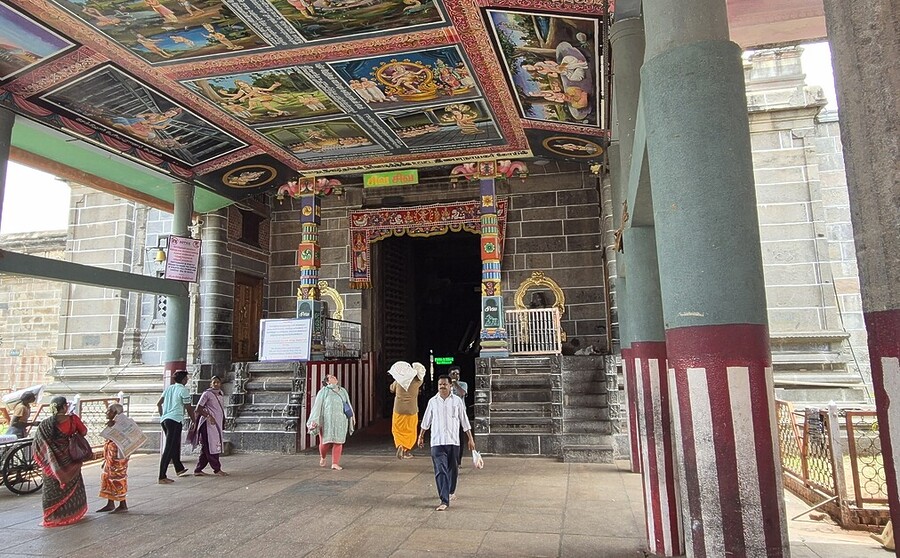
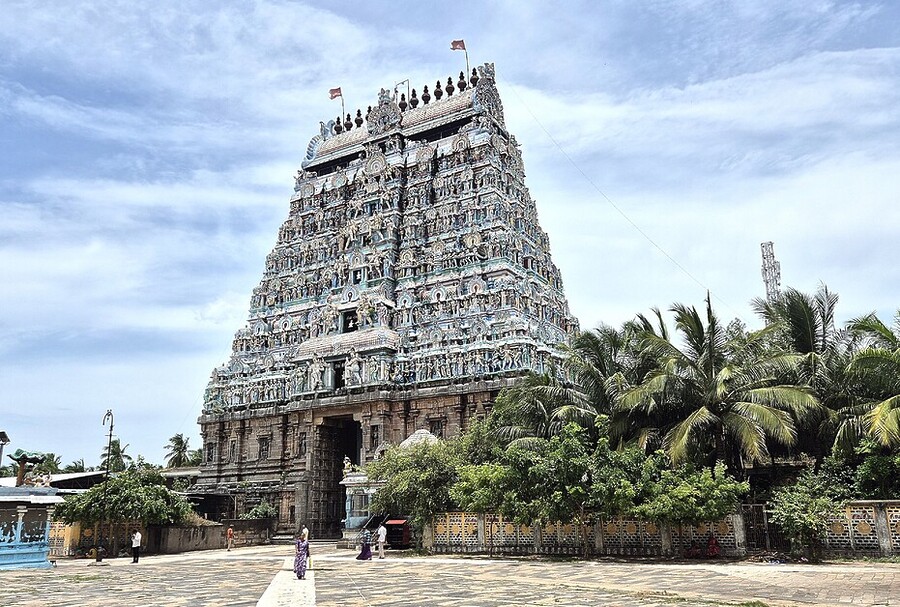
The temple is run by 200 priests, wearing white lunghis with their hair pulled back from their foreheads. Inside are pillared halls and six times a day a purification ceremony is carried out with flames, smoke, and clanging bells.
Today, the temples of Tamil Nadu and their deities within – many dedicated to Shiva but also incarnations of Vishnu, Ganesh and Parvati – attract hundreds of thousands of Hindus to complexes that dominate communities.
Tranquil gardens
Towards Cholapuram, however, there is a quite different temple experience; equally magnificent but with fewer visitors, set in tranquil gardens where families gather beneath the shade of trees.
This is the Gangaikonda Cholapuram temple, like those at Mamallapuram is a UNESCO World Heritage Site and was built to commemorate the Chola dynasty’s victory over the north Indian kings, with a high vimana (central tower) with two carved door guardians that are impressive in scale and detail.
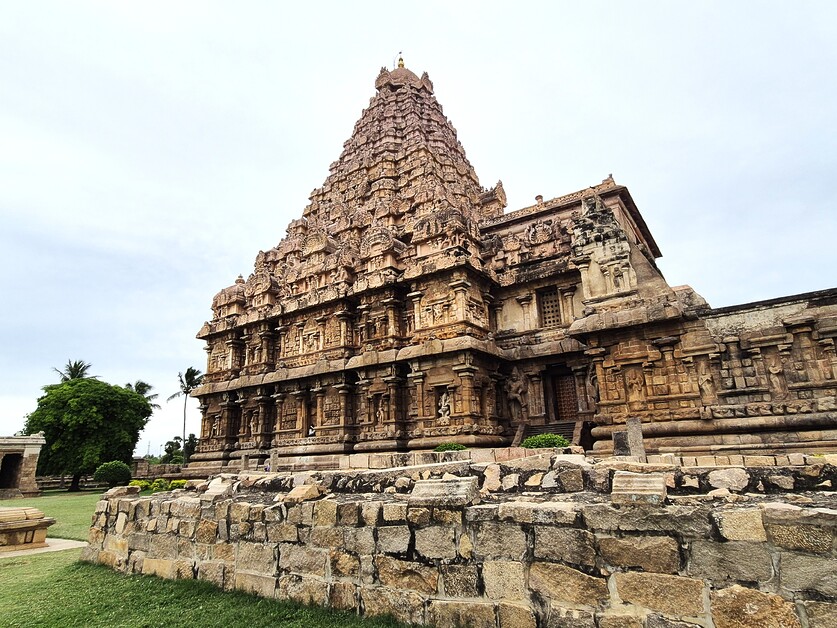
“Gangaikonda is a Shiva temple with beautiful sculptures in the typical 11th century Chola style,” explains Mahesh.
“The Cholas were great temple builders. They were also sailors and captured Sri Lanka, Myanmar, Cambodia, Laos and Indonesia and took the architecture of this region to other parts of the Far East.”
Architectural marvel
At Tanjore (or Thanjavur), the Brihadeeswara Temple is also a UNESCO World Heritage Site and built of heavy pink granite quarried and transported from hundreds of miles around.
Known simply as the Big Temple, it is considered an “architectural marvel,” taking a mere six years to build and completed in 1010 AD.
Once through the entrance portal, visitors have to remove shoes and place in a chappal store before entering the colossal central courtyard, measuring 78m by 156m.
The vimana that rises above the central deity is 60m high, topped by a giant cupola weighing 80 tons and made of eight separate stones. It is believed the temple builders used a four-mile-long ramp to haul the heavy granite blocks into place.
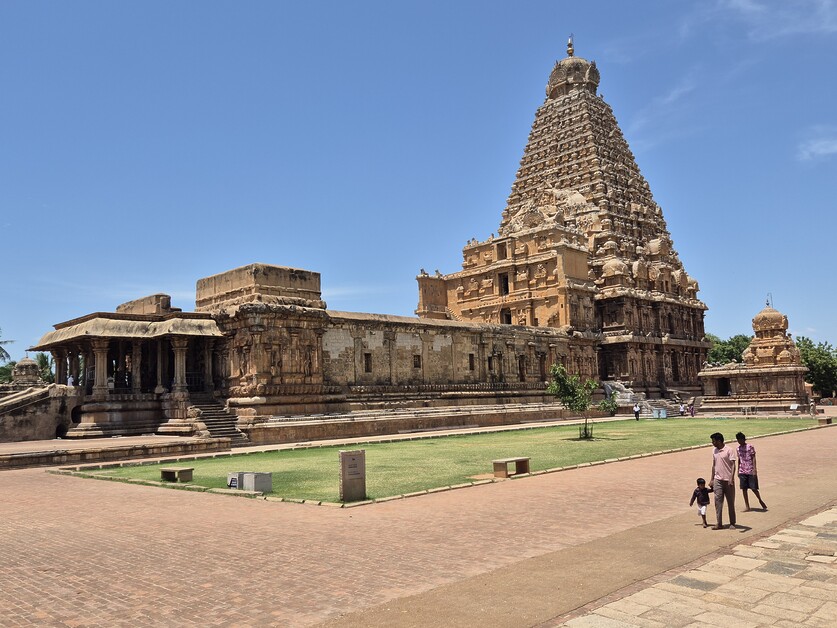
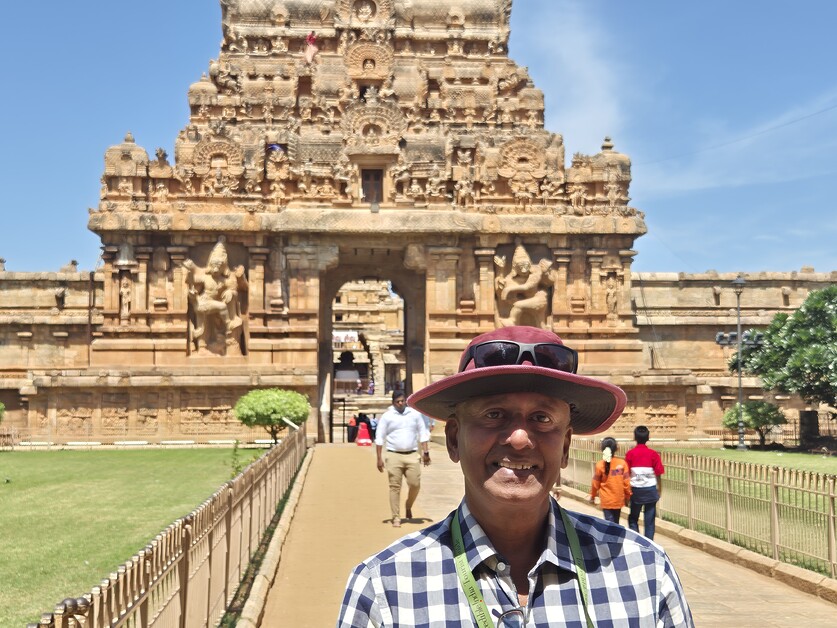
The inner sanctum is decorated with flowers and offerings and has a lingam in a form of Shiva, with images of Ganesh (the elephant God and his son) and his wife Parvati beside the doorway.
“The 11th century cloisters going around the outer wall are magnificent and topped with sitting bulls, the ‘vehicle’ of Shiva,” Mahesh points out.
Within the cloisters are deities, lingams and wall paintings.
The courtyard tiles can be hot but, thankfully, a pathway of hessian material offers some respite as you walk barefoot from one area of shade to another.
Magnificent carvings
Trichy is the biggest working Hindu temple in the world and embraces a whole city within and covers 360,000 square metres. Its alleys are alive with stalls selling everything from flowers and marigold garlands, coconut offerings and food, to toys, trowels, shovels, saris and shawls.
Set on Sri Rangam, an island in the Kaveri river, which is regarded as the Ganges of the South, and dedicated to Vishnu, there are actually 21 entrance gopurams, most dating from the 12th century, though the last and tallest at 72m high was not completed until 1984.
Once inside, there are pillared halls, and an elevated area for an overview of the temple, which has many magnificent carvings.
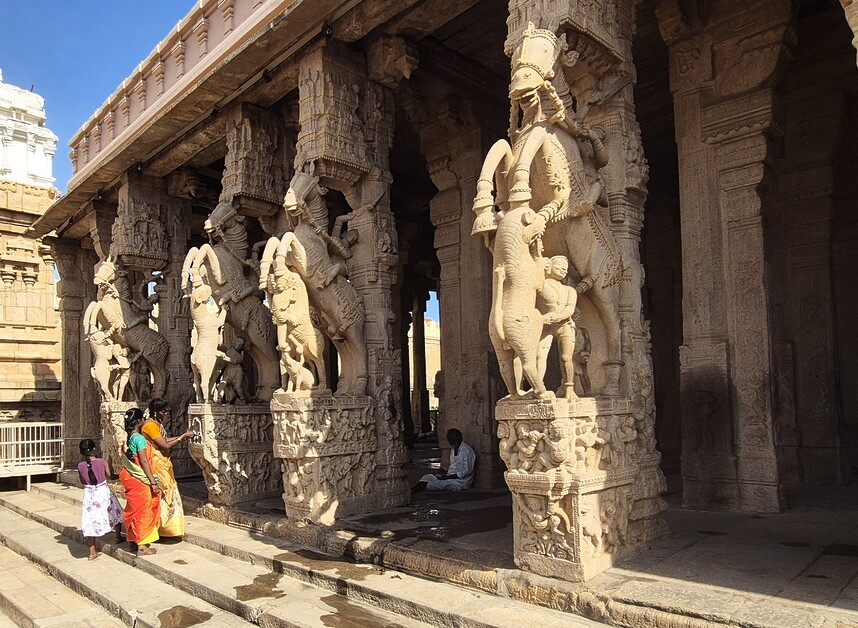
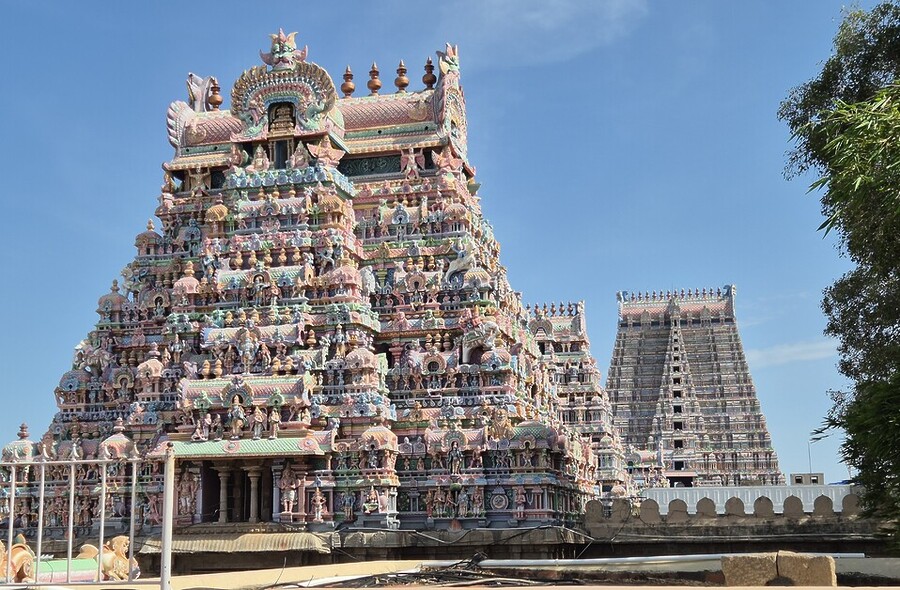
Mahesh adds: “Over a period of abut 800 years, all the important dynasties of south India contributed to its construction with additions and expansions.”
The sanctum below a golden roof has a lingam in a reclining form of Vishnu, with followers defined with a red vertical symbol on their foreheads.
“In Tamil Nadu there is a saying ‘do not live where there are no temples’”, says Mahesh. “Given that there are 44,000 of them in the state, it is difficult not to live in close proximity to a Hindu temple.”
One thousand pillars
The Meenakshi temple in Madurai is a classic example of a living, working, breathing temple.
The four entrance gopurams are currently covered in scaffolding for repainting as the temple readies for a reconsecration, but they are in themselves an art form: long strands of casuarina wood, bound together with rope and forming a platform for skilled craftsmen to gain access to the towers.
Guns, cigarettes, alcohol, electronics, mobile phones, cameras and even smart watches are banned from the temple.
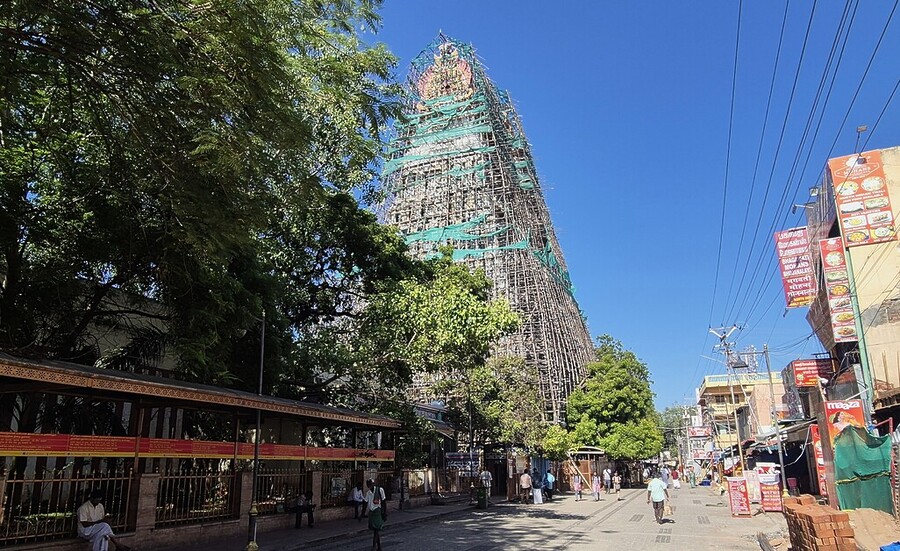
While that may disappoint some, the fact that you can’t take your camera in offers an opportunity to remind ourselves to experience such religious and architectural sites through all our senses.
The incense and scent of jasmine penetrate your mouth and nose; the sounds of drums, horns and bells ring in your ears; and you are free to gaze around unhindered at the architecture and ceremony.
Dedicated to an incarnation of Parvati, a must-see is the 1000-pillared hall with sublime granite carvings of dancers, warriors, horses, lions and elephants.
Now a museum, with a ceiling painted with floral designs, don’t waste your time counting the pillars – everybody in Madurai knows there’s only 983 of them!
But this is certainly a temple to admire through your eyes and thoughts, rather than the lens.
Wondrous attractions
In the surrounding streets, there are craft and souvenir shops, hawkers selling wares, while further out are fruit and veg stalls, women selling produce from beneath faded umbrellas. And then it is out into the throng of city streets; a cacophony of horns, autorickshaws weaving between buses, bikes and cars, pedestrians risking life and limb to cross the road as everybody tries to beat the lights.
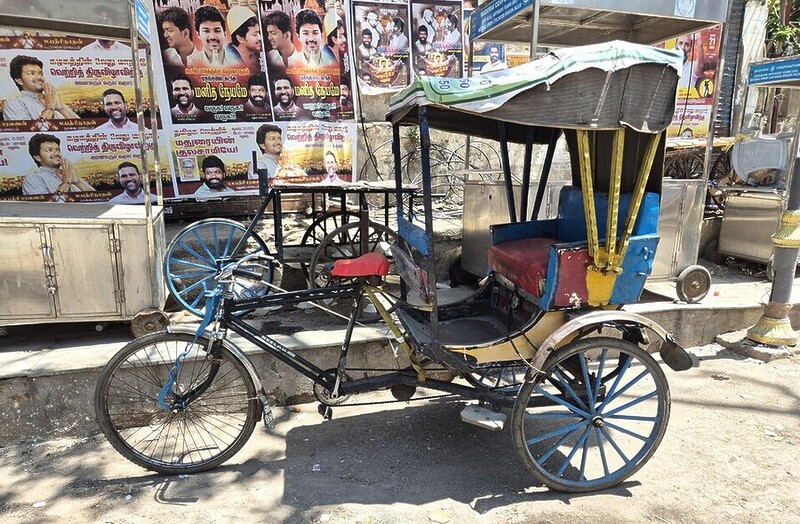
Beyond the temples, Tamil Nadi has a natural landscape of rice fields and palms, beaches and fishing villages and also offers a route into Kerala and the spice and tea plantations.
Yet the colossal temples of Tamil Nadu are one of India’s wondrous attractions, offering an aspect of real India that will leave you mesmerised.
Tell me more about Tamil Nadu and its temples
*Mark Nicholls was hosted by ILH an India-based destination management company working with guests and travel agents to deliver tailor-made guided experiences.
Temple information: There is no admission charge to most temples, though designated monuments may have a small entrance fee. Some temples close after mid-day and re-open late afternoon. Non-Hindus are not permitted to enter the inner sanctums and visitors must remove their shoes at temple entrances.
Accommodation: CGH Earth Hotels offers good quality, atmospheric accommodation, with individuality and style and follows a sustainable and eco-friendly ethos. From city centre hotels to rustic cottages set in a natural rural location, these include the Palais De Mahe in Puducherry and the Mantra Koodam at Kumbakonan.
Food and drink: Dishes include mutton, chicken or vegetable biryani, malai kofta curry, navrathan pulao rice, and daal with a great selection of vegetarian options wherever you go. Not all hotels and restaurants serve alcohol. Breakfast menus include eggs to order alongside Indian favourites of idly, dosa, uthappam (thick dosa with chopped onion and green chilli), fresh fruit, coffee and tea, including the delicious masala chai.
For more information on the Temple Towns of Tamil Nadu please visit the Tamil Nadi Tourist Office.
Getting There There are numerous flights and routes to India from the UK. Mark Nicholls flew Manchester to Doha and on to Chennai with Qatar Airways. Travel between temples is best via road, either by car and driver, or organised tours.

